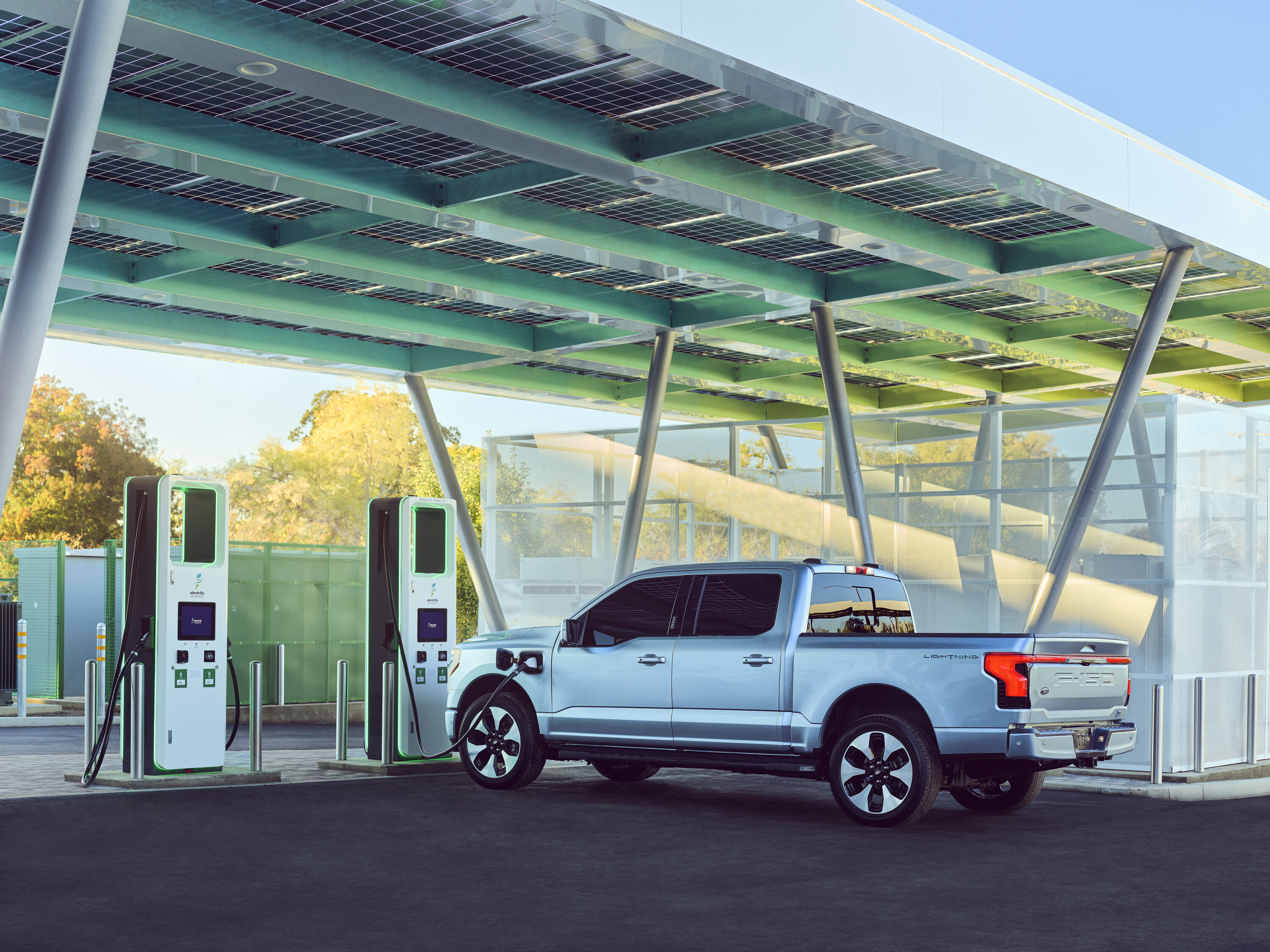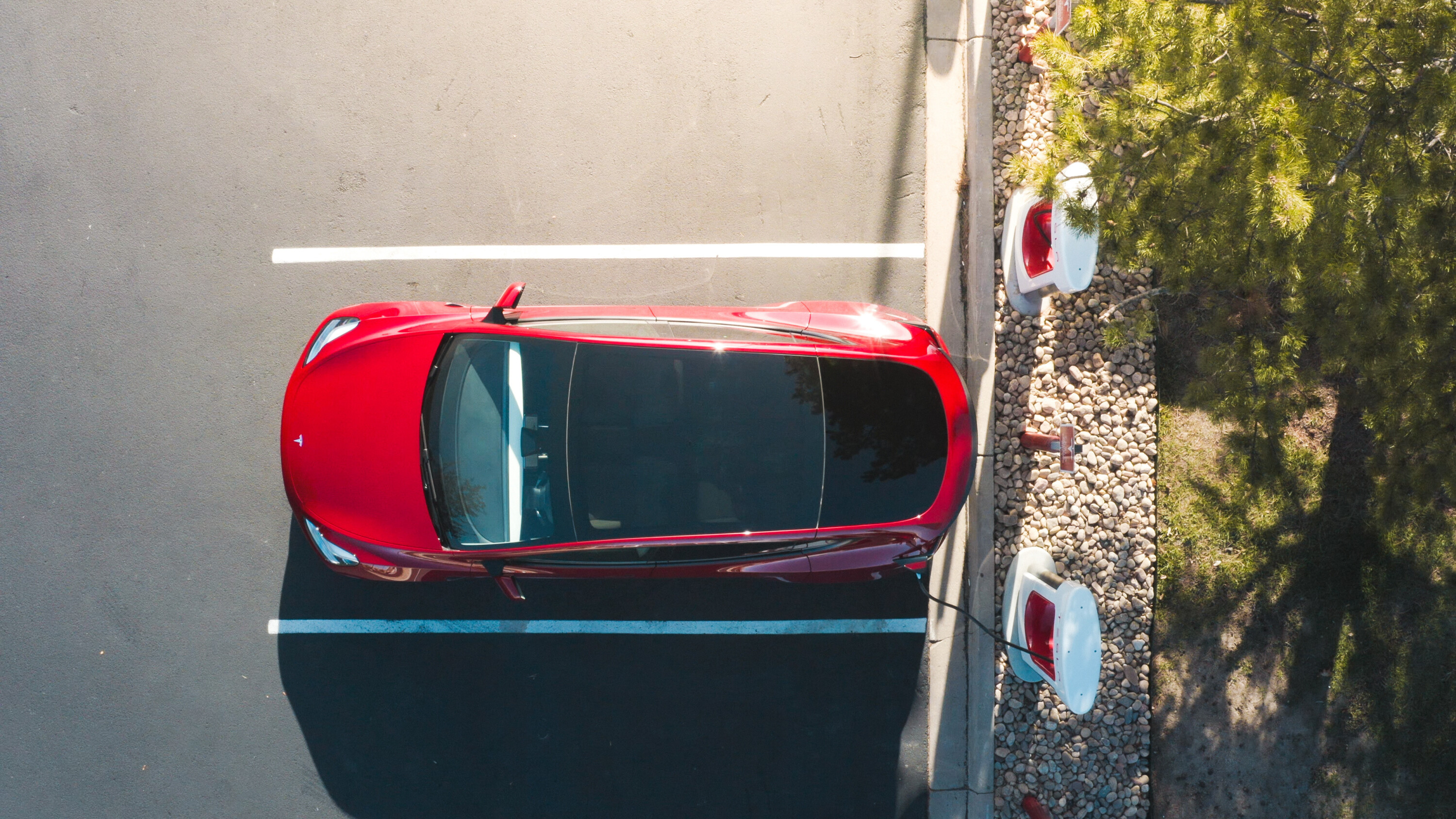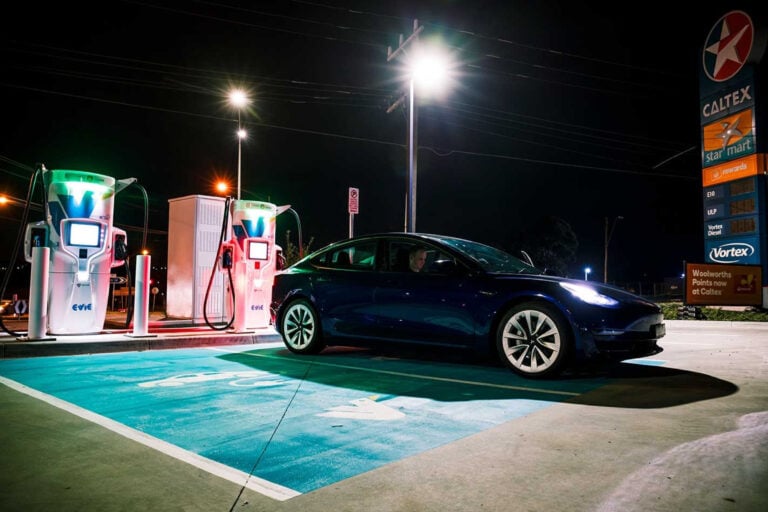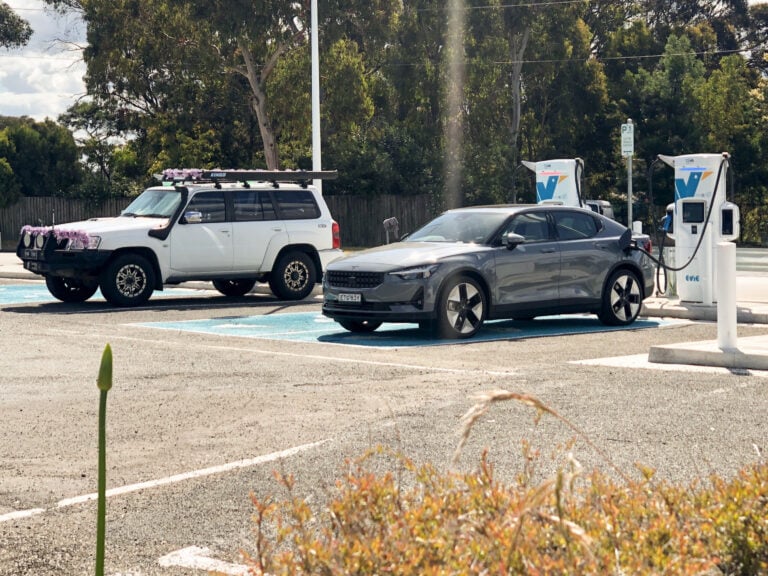
New data from J.D. Power [↗] has revealed public electric vehicle charging satisfaction is declining in the United States, despite a growing number of stations.
Snapshot
- More Americans less satisfied with public charging
- But there are a number of major developments soon
- The most ideal way to charge is still at home
The research firm’s latest annual electric vehicle experience public charging survey found satisfaction with ‘Level 3’ fast DC public charging stations dropped by 20 points (654 out of 1000), while ‘Level 2’ slow AC units decreased by 16 points (617).
Reinforcing its long-standing reputation for reliability and ease-of-use, EV owners were most satisfied with the Tesla Supercharging network (739), though slower Tesla Destination AC units (661) closely trailed behind Volta (665).
Other DC networks were at least 100 points lower in customer satisfaction, including ChargePoint, EVgo and Volkswagen’s subsidiary, Electrify America.
ud83dude21 Key Reasons for public EV charging dissatisfaction
- Time to charge u2013 both AC and DC
- Location inconvenience and lack of amenities
- Faulty stall/s and long queues
The study also found that 20 per cent of users have visited a charger – but did not charge their vehicle due to out-of-order stations or long waiting queues.
When owners plug in at a DC fast charging station, they usually took around 30 minutes – in line with best-practice etiquette.
The study was conducted in collaboration with public charging finder platform Plugshare from January to June 2023, and included 15,079 respondents who owned a pure electric or plug-in hybrid electric vehicle (PHEV).
Will public EV charging improve?

Many major car manufacturers in North America are adopting Tesla’s connector standard, such as General Motors, Ford and Rivian, but it’ll roll out from around 2025.
Despite Tesla opening up some of its sites to all EV models via a ‘Magic Dock’ adapter, the adoption of the company’s North American Charging Standard (NACS) in non-Tesla EVs aims to take advantage of the widespread and reputable Supercharging and Destination network.
The plug is also more compact and lighter, too.
Additionally, seven major automakers have partnered to establish a new charging network in North America – similar to Europe’s Ionity – while Mercedes-Benz has also committed to launching its own network for all vehicles globally, starting in the continent.
In Australia, there are more than 370 charging locations – and that number is rapidly expanding.
Organisations such as the RAA in South Australia, Synergy and Horizon Power in Western Australia, and the NRMA in collaboration with the federal government have committed to roll out more public charging infrastructure to fill underserved areas across the nation.
A number of providers are also installing newer modular stations from manufacturers such as Tritium, Kempower and ABB, with some even upgrading and replacing older, less reliable first-generation units.
The most ideal, convenient and cheapest way to recharge an EV is at home, but for some, this isn’t possible if there is no power access.
More EV stories to help you choose the best car for your needs
- ? EV news, reviews, advice & guides
- ❓ Short & sweet: Your EV questions answered
- ⚡ New EVs: Everything coming to Australia
- ? Australia’s EVs with the longest driving range
- ⚖️ Best-value EVs by driving range
- ? How much do EVs cost in Australia?
- ? How much more expensive are EVs?
- ⚖️ Number crunching: Is it time to switch to an EV?
- ♻ Should you buy a used EV?
- ?️ Are EVs more expensive to insure?
- ? Costs compared: Charging an EV vs fueling a car
- ? EV charging guide
- ? Are there enough EV chargers in Oz?
- ?? EV servicing explained
- ? EV battery types explained
- ? When do EV batteries need replacing?
- ? Hydrogen v EVs: What’s best for Oz?
- ✋? Mind your manners! EV charging etiquette tips
- ? How sustainable are EVs, really?
MORE advice stories to help you with buying and owning a car
We recommend
-
 Advice
AdviceEV Charging Explained: Home & public charging, speed & plugs
Sponsored by GET Electric, this is a go-to guide to understand charging an EV at home or on the road
-
 Advice
AdviceAre there enough EV chargers in Australia? Here's your guide
Public EV charging networks are expanding, but there still aren’t enough today. Does that mean you shouldn’t buy an EV?
-
 Advice
AdviceEV charging etiquette tips: Dos and don’ts
What’s right and wrong when it comes to public EV charging and queueing? Here’s your definitive etiquette guide




